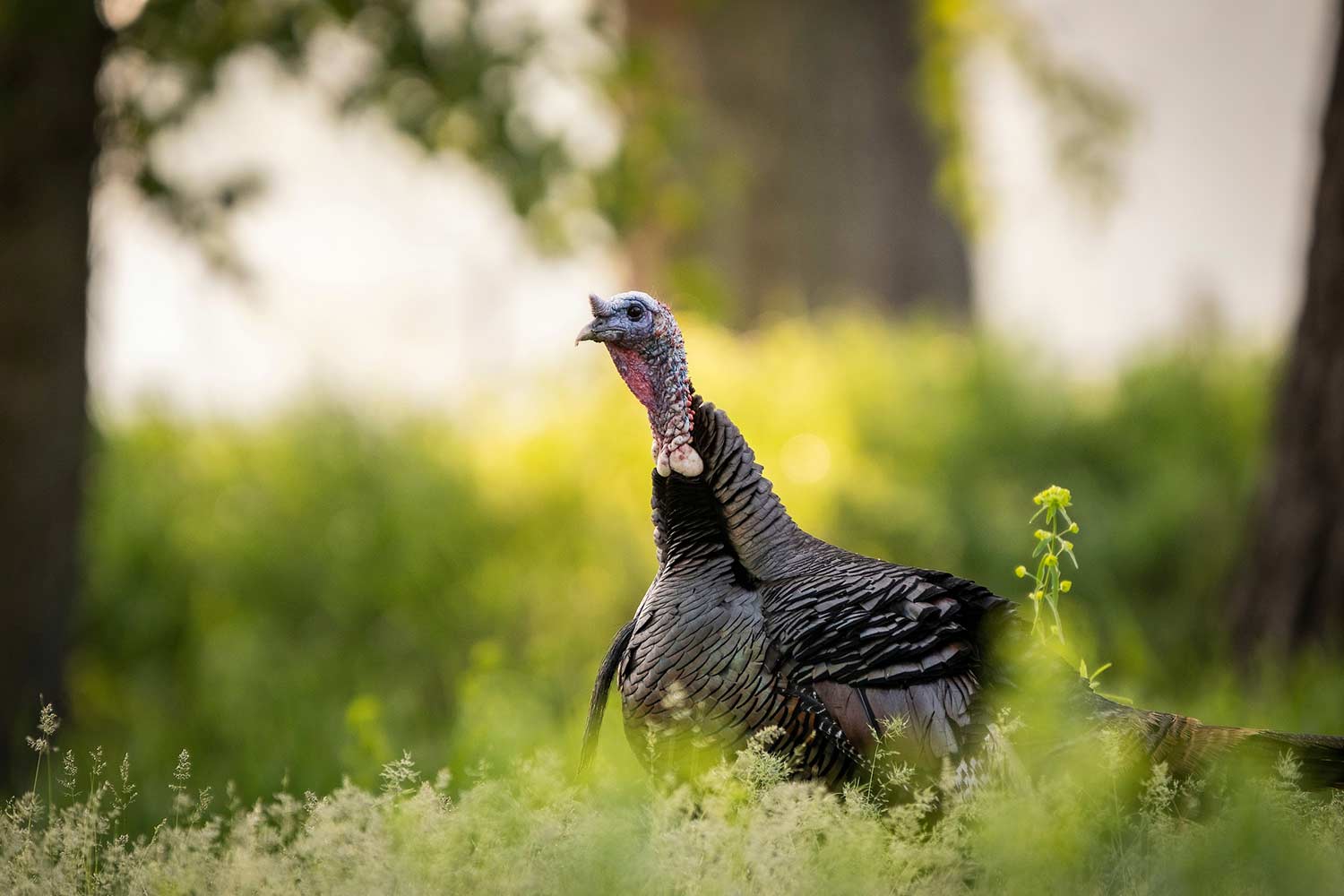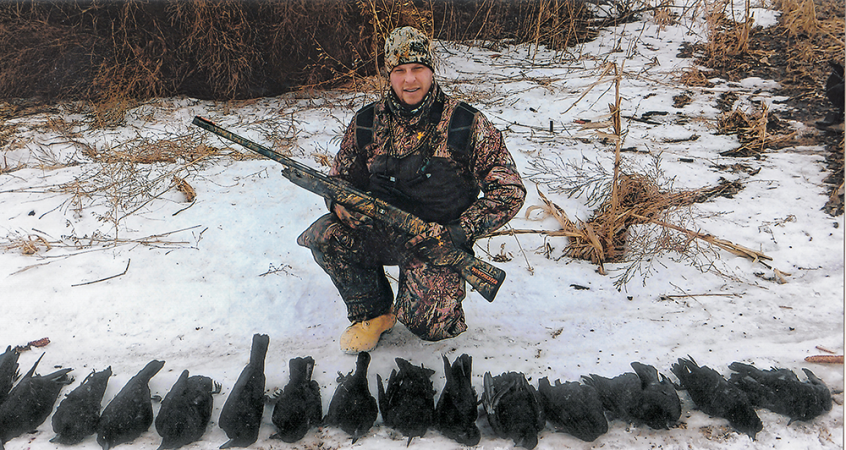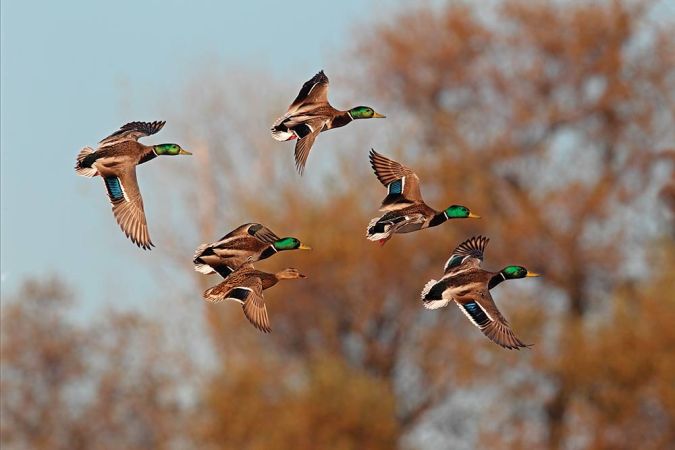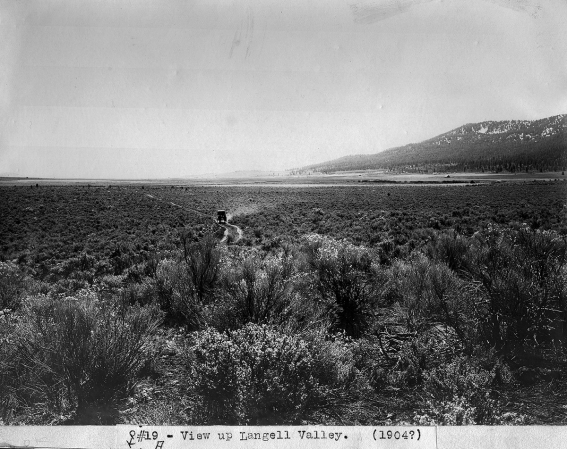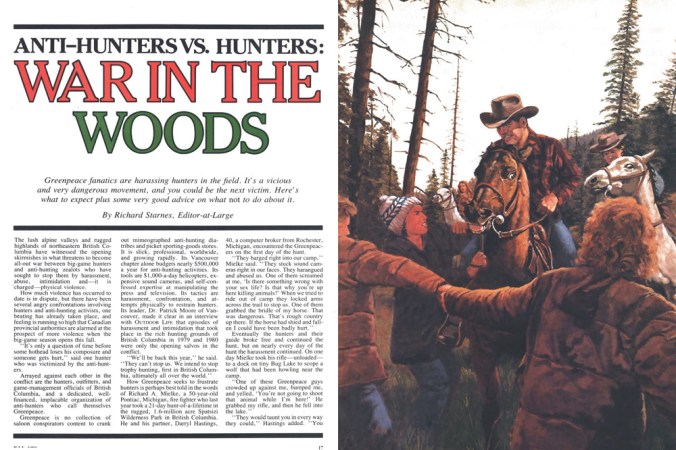Last month the National Wild Turkey Federation’s board of directors announced that it was replacing retiring CEO Becky Humphries with a pair of senior executives who will lead the organization into its second 50 years as the nation’s leading wild turkey, woodlands-habitat, and hunting heritage non-profit.
The appointments of co-CEOs Jason Burckhalter and Kurt Dyroff are effective immediately. Humphries, who has been at the helm of the NWTF since 2017, will continue to lead the federation’s governmental affairs and public policy work until her official retirement next February, at the NWTF’s 50th anniversary convention.
Burckhalter and Dyroff are just the fifth and sixth CEOs of the NWTF, whose previous leaders have displayed styles that could be described in turn as scrappy, flamboyant, corporate, and technocratic. The NWTF was founded in 1973 in Fredericksburg, Virginia, by Tom Rogers, an outdoor writer and salesman who noted the rise of the B.A.S.S (Bass Anglers Sportsman Society) in Alabama, and borrowed many of its techniques for growing memberships, hosting fundraising events, and building a culture around the idea of shared passion for wild turkey hunting and calling.

Rogers, who brought the NWTF to its current home of Edgefield, South Carolina, promoted the twin ideas of competitive turkey calling contests and trap-and-transplant turkey restoration efforts to return birds to vacant habitat. Rogers stepped down as CEO in 1981 as Rob Keck, a showman and telegenic leader who drove membership and the NWTF’s visibility through its “Turkey Call” TV show, expanded the organization’s footprint from mainly the Southeast and Midwest to the entire nation. Under Keck’s leadership, the NWTF accelerated turkey restoration efforts, boosting continental wild turkey populations and introducing the birds into new habitats from the Great Plains to the Pacific Northwest. Keck resigned in March 2008, after the high-profile firing of the organization’s senior executives over allegations of mismanagement. Agri-business executive George Thornton was then selected to run the NWTF until 2017, when wildlife biologist Becky Humphries was tapped as CEO. Under her tenure, Humphries brought a renewed commitment to habitat and partnerships with wildlife agencies, but she also presided over the first declines in wild turkey populations, which dropped from a high-water mark of 7 million birds to an estimated census of just over 6 million turkeys.
The conservation group, which has branched out to include hunting heritage and woodland habitat conservation as its mission, will celebrate its 50th anniversary with a gala convention next February in Nashville, Tenn.
The event will draw plenty of attention, and not only to celebrate the leadership transition. The decline of wild turkeys across wide swaths of core habitat has rattled longtime hunters, and even given rise to another turkey conservation organization. Turkeys For Tomorrow is dedicated to turning around precipitous declines through a combination of conservative harvest regulations and research into dynamics of turkey population trends.
With all this as context, I sat down with co-CEOs Burkhalter and Dyroff to discuss how dual leadership will work, how their management styles complement and conflict, and how they intend to lead the NWTF into its second half-century of conservation.
Burckhalter has served as the NWTF’s chief information officer for the past three years, and prior to that served as its vice president of finance. He grew up in Edgefield County, South Carolina, and continues to live in the area. Dyroff started his conservation career with Ducks Unlimited and joined NWTF eight years ago as its director of conservation for Western states. A Pennsylvania native, Dyroff now lives in northern Idaho.

OUTDOOR LIFE: Tell us a little about your backgrounds and what specific roles you’ll bring to the dual leadership model.
KURT DYROFF: I was born and raised on a farm in north-central Pennsylvania’s Potter County, and come from a hunting family. I’ve been in the non-profit sector for 20 years and came to the NWTF in 2014 to oversee Western conservation operations, then headed up NWTF’s business support functions, including finance and accounting. My responsibilities as part of the shared CEO role will be handling the mission side of the organization, both habitat delivery and hunting heritage programs, coupled with some of our business support functions, such as legal, HR, accounting, finance, and management of our land holdings.
JASON BURKHALTER: I grew up not far from [NWTF] headquarters in South Carolina and stayed mainly in the area. I grew up on the water, fishing every chance I got, and came to hunting later in college. I now have three boys that take up a lot of my time when I’m not working or outdoors. I came to the NWTF on the finance side of the organization, and then moved to the communications side. I’ve led the IT, membership, national event, and communications teams since 2018. In addition to the chief information officer role, I’ll be heading all fundraising activities, field operations, our banquet system, development, and corporate relations.
OL: Will Becky Humphries remain in a leadership role?
KD: Becky’s retirement has been planned for a while, and will be official at the end of our convention next February. This allows us to have a seamless transition. Currently the majority of operations have transitioned or are in the process of transferring. Becky will continue to oversee governmental affairs and policy work and represents the NWTF on boards and appointments. As she gets closer to retirement, the governmental affairs and public policy piece will come under my wing.
OL: The idea of co-CEOs is pretty novel. How’s that going to work?
KD: We’re actually finding that businesses in both the for-profit and nonprofit categories are recognizing the value of dual leadership. The world is evolving at such a fast pace and scale that traditional businesses structures and hierarchies and the way we make decisions have a hard time keeping up with the change. Dual leadership allows the two of us to work deeper into the organization and have a greater sense and pulse of what’s going on while giving volunteers and staff better access to us. It’s a reflection of a culture of collaboration and innovation that we’re encouraging across the organization, a culture where ideas and solutions come from anywhere, so everyone has ownership in where the organization is headed. It can be a challenge at first, but I think once we push through that phase, it will open doors for the organization and allow the NWTF to realize its full potential.
JB: With our different backgrounds and disciplines, we have a 360-degree view of things and cover for blinds spots that each of us have.
OL: This is sort of a Bachelorette question, but I’d like each of you to point out the other’s strengths and weaknesses.
JB: We’re both analytical thinkers, which can be challenging at times. But knowing that, and knowing how we reach decisions, it allows us to coach one another and collectively arrive at better decisions.
KD: There’s a 75 percent chance that Jason isn’t wearing socks right now, while I’m wearing Darned Tough wool socks. We have different styles and ways of getting to decisions. Jason can be disruptive and push and innovate, which is frankly something the organization has needed. I balance that with a softer approach. But disagreement allows us to work through difficult decisions knowing that we have a shared alignment on the outcome.

OL: These leadership changes are coming as the NWTF nears its 50th anniversary. What other changes do you anticipate in the near future? Is the NWTF’s mission changing?
JB: As we move forward, we’re leaning into our mission even more than ever. Our mission is not changing. It will forever be to reinforce the NWTF’s commitment to the conservation of the wild turkey and the preservation of our hunting heritage, and to elevating our membership and member experience. Kurt and I had the opportunity to collaborate on an organizational vision which builds off a strategic plan that staff and volunteers developed prior to Covid. That plan says ‘The NWTF is the transformative and forward-leaning conservation and hunting heritage organization focusing on the conservation of the wild turkey while benefiting healthy habitat, waterways, and communities and championing the soul of American hunting lifestyle.’ We think that captures the full breadth of our impact and positions us uniquely to grow and to have success.
KD: Our mission is front and center, and is probably more so now than it has ever been. The four pillars of that strategic plan that Jason mentioned are built around robust turkey populations, conserving healthy habitat, preserving our hunting heritage, and building an organization for the future. Jason and I are trying to open up every door and remove every barrier so we can fulfill and support those four pillars.
OL: That sounds good, but you are both acutely familiar with discontent of many hunters in core areas of turkey country. How do you square that discontent, and the feeling that the NWTF hasn’t lived up to its mission in some areas of the country?
JB: We recognize the decline of turkey populations in certain pockets of the country. We have invested in turkey research and will continue to invest in additional research and habitat delivery to combat the declines. We know it’s not just one thing, but that it’s a myriad of things depending on where you live and what’s going on with your local population. But who else than the National Wild Turkey Federation to be the glue to bring people together to find solutions?
KD: Turkey populations in North America hit an all-time high north of 7 million a couple years ago. We’re probably at 6.2 or 6.3 million now, and there are pockets that have experienced steep declines. But there are other parts of the country with increasing populations. It’s all about recognizing that there are areas of concern and figuring out exactly why and what we can do about it. The NWTF is going to increase investments in research and habitat work so that we can get a good sense of what’s going on and get ahead of some of these declining populations. In the next couple weeks we’ll be announcing a new slate of research proposals, and some of them are directly tied to identifying what some of those limiting factors may be and what we can do about it.

OL: I’d like to dwell on declines for a second. Turkey hunters have a tendency to judge success based on their most recent hunt, and a lot of hunters had unsuccessful seasons the last couple springs. How seriously should we take these regional declines? Is it threat-level red for the NWTF? or are these small but temporary blips?
KD: That’s what we need to find out, and we need to have honest conversations about it. At the Wild Turkey Symposium [which starts this week in Asheville, North Carolina], we’ll have the best minds in the room, from state agencies, federal agencies, the NWTF, we’re going to talk about it and figure out what we need to go moving forward and the investment it’s going to take. You’re going to see the NWTF in the lead, putting resources where they’re needed most, if it is a red-flag issue then we’re going to address it.
OL: Speaking of the Wild Turkey Symposium, what are some of the questions you’d like researchers to answer?
KD: What’s awesome about the NWTF’s model is that, especially as it applies to research, we lean on our partners. The NWTF Technical Committee is made up of representatives from state and federal agencies, the best turkey and big-game biologists in the business. They share what’s going on in their particular states and identify what some of those research needs are. So I don’t want to get ahead of our partners by anticipating what that research will focus on. But generally, we know that some of the limiting factors in areas of decline revolve around nesting and brood-rearing habitat, so that will undoubtedly be a focus of research. But we also want to study what’s going right in areas where populations are increasing in order to replicate that.
JB: We also want to develop regional communication plans that speak directly to the stakeholders in those areas so that we can get closer to their level of expectations, recognizing that turkey hunting isn’t the same experience for every turkey hunter in every area of the country.
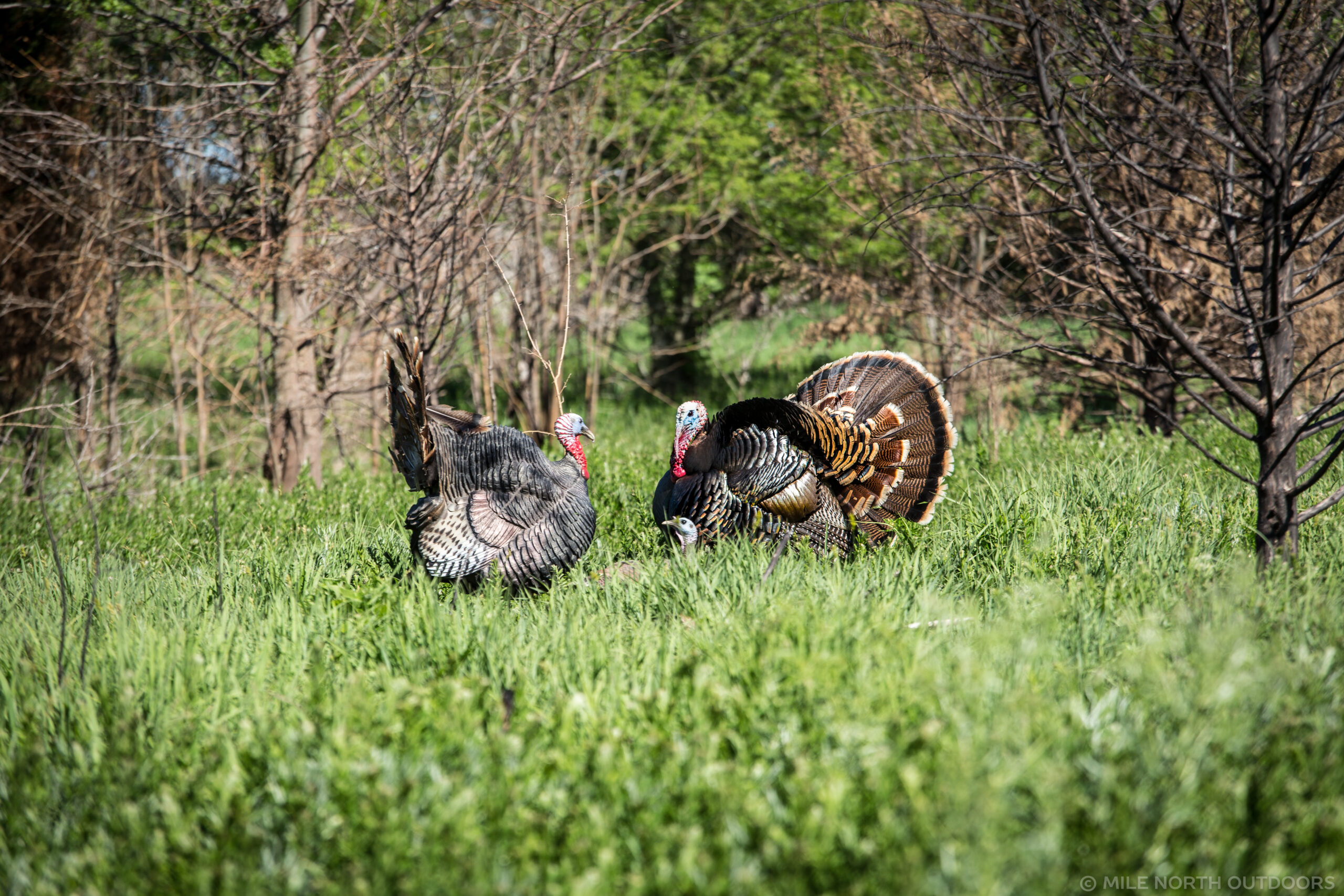
OL: There are more choices than ever for a hunter to join a wildlife conservation organization. Why should someone join the NWTF, and is the value proposition of the organization higher or lower than it was 49 years ago?
JB: The mission is what originally excited me about the organization, and it’s more important than ever to deliver the impact the NWTF has and will have. The mission is what gets you to the dance. But what keeps the NWTF so essential is the people and the relationships you build across this nation and the extended family that you develop by being part of this organization.
KD: The mission piece is critical, but the NWTF has an even greater, almost altruistic calling. It gives people the opportunity to make the world a better place. The work that we do, through our mission, gives people an equal opportunity to recreate and be out in nature. It gives us clean and better sources of water, it improves communities and improves habitat, forest health, and wildlife. And you get to do it with people who are just as passionate as you are. That’s a powerful mix.
OL: Okay, one last question. The NWTF convention is known as one of the great parties for outdoorsmen and women. Give me a glimpse of your 50th birthday party next February.
JB: It’s going to be a blockbuster event, and if you want to be part of the biggest family reunion you can imagine, and you want to feel the passion of the American hunting lifestyle and everything that goes with it, then you should be in Nashville next February. We’ll certainly honor our past and recognize the people who got us here, but we’re going to be looking forward, because the future is bright for the NWTF.
This interview was edited for clarity and brevity.

